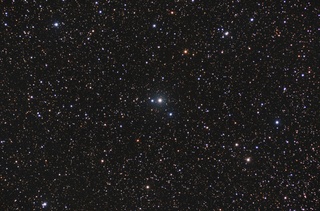
- Constellation: Camelopardalis
- Right Ascension: 04 08 38.75
- Declination: +53 21 39.3
- Apparent Magnitude: 8.09 - 9.8 (B)
XX Cam is a variable star located in the constellation of Camelopardalis. Currently classified as a R Coronae Borealis type, although there is some question about it. Magnitude varies from 8.09 - 9.8 in B band.
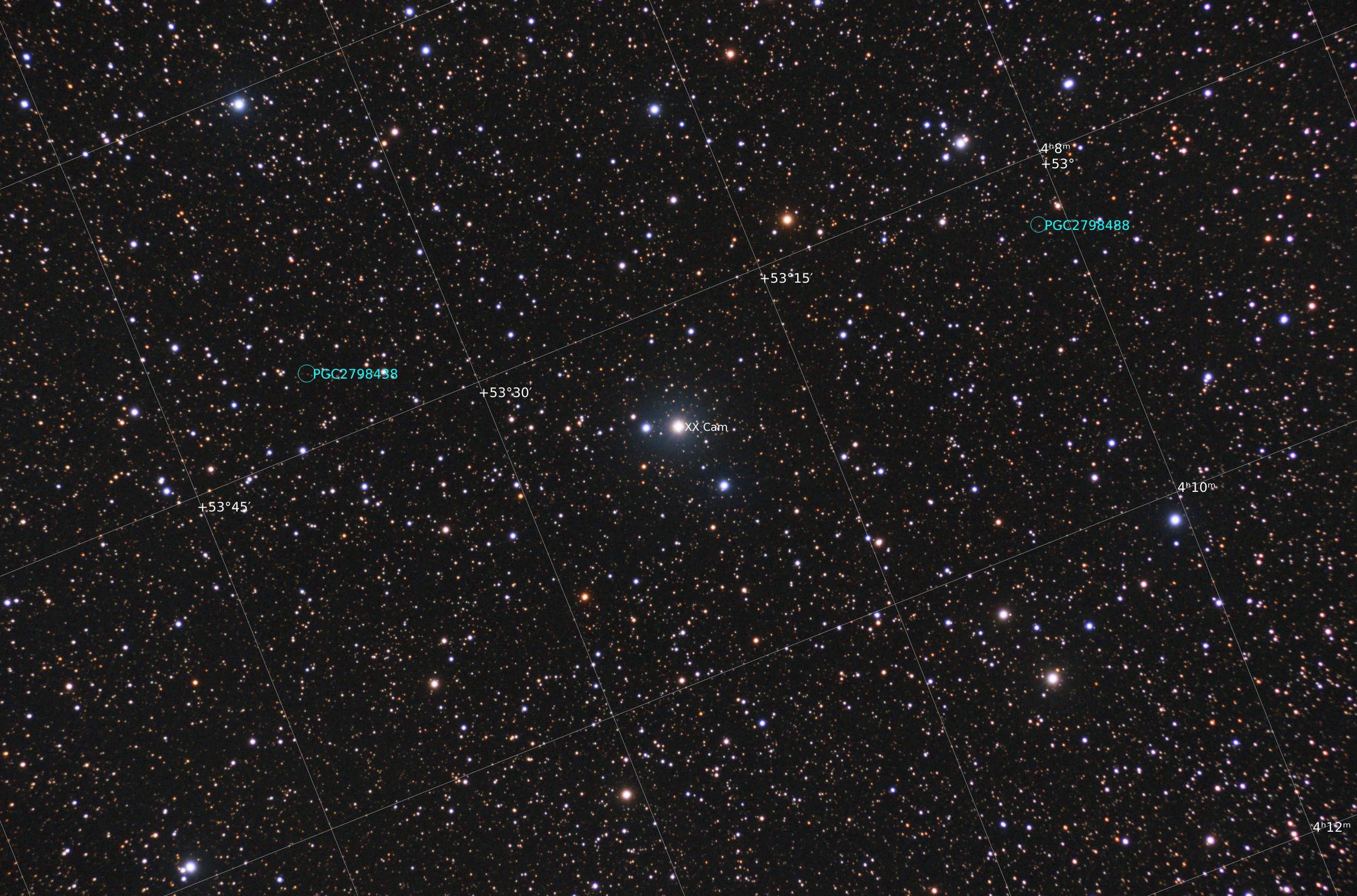
- Details
- Category: Stars
- Telescope: Explore Scientific 127 Refractor
- Camera: ZWO 2600 MM
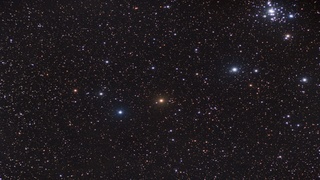
- Constellation: Camelopardalis
- Right Ascension: 04 05 53.85
- Declination: +61 47 40.0
- Distance: 2758 ly
- Apparent Magnitude: 7.5 - 7.7
- B-V Color Index: 2.26
UV Cam is a carbon star located in the constellation of Camelopardalis. It's variability ranges 7.5 to 7.7 with a period of around 294 days.
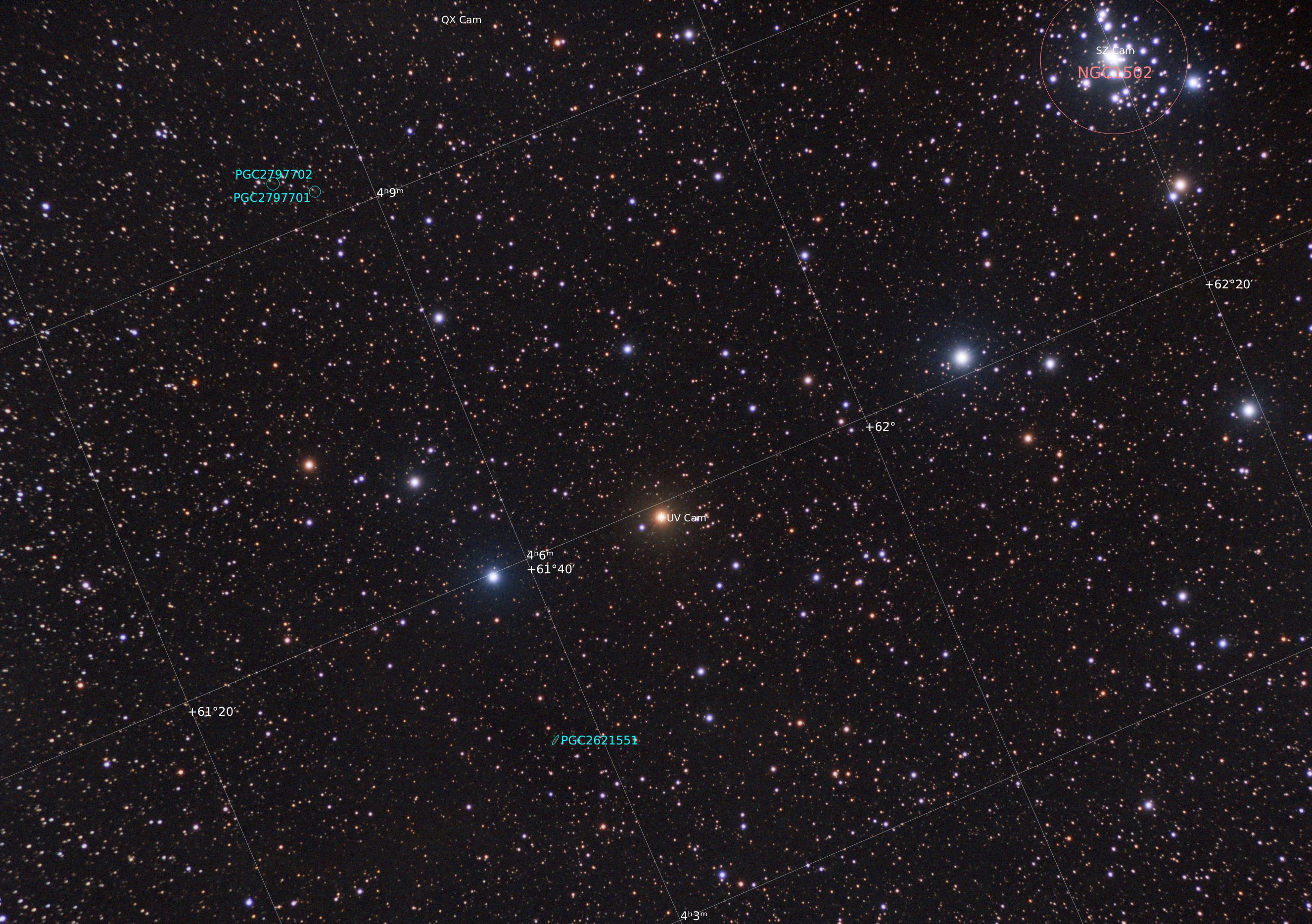
- Details
- Category: Stars
- Telescope: Explore Scientific 127 Refractor
- Camera: ZWO 2600 MM
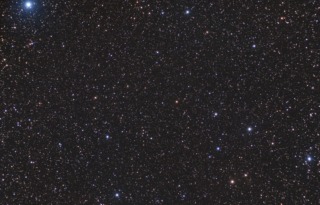
- Constellation: Ophiuchus
- Right Ascension: 17h 57m 48.49847s
- Declination: +04° 41′ 36.1139″
- Distance: 6 ly
- Apparent Magnitude: 9.5
- B-V Color Index: 1.713
Continuation of my mostly annual imaging of Barnard's Star, one of the closer stars that shows the most movement across the much further background stars.
An animation of its movement from 2014 through 2023.
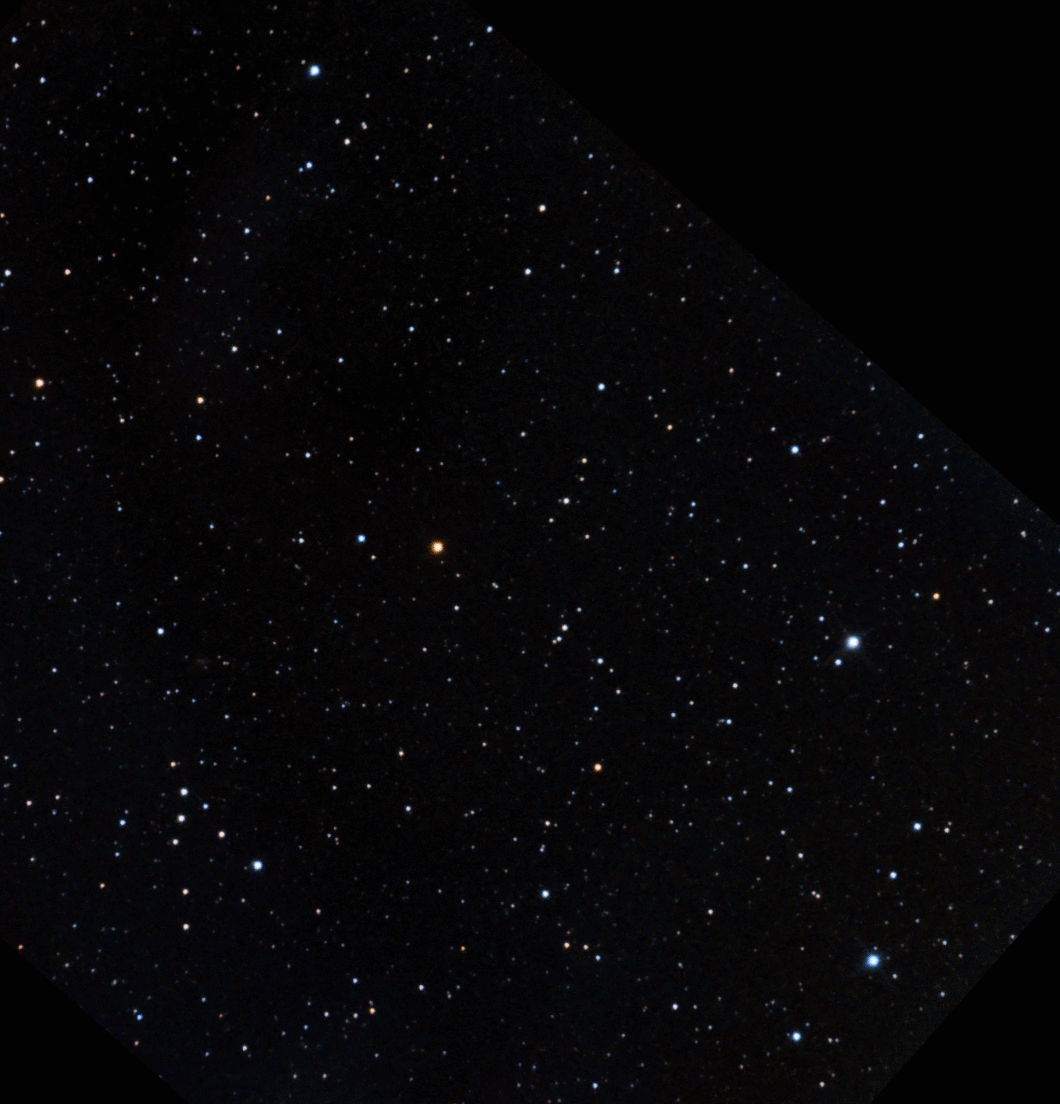
- Details
- Category: Stars
- Telescope: Explore Scientific 127 Refractor
- Camera: ZWO 2600 MM
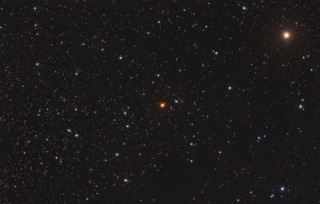
- Constellation: Camelopardalis
- Right Ascension: 03h 41m 48.17393s
- Declination: +62° 38′ 54.3906″
- Distance: ~3,000 ly
- Apparent Magnitude: 7.55 V
- B-V Color Index: +1.95
U Camelopardalis is carbon star located in the constellation of Camelopardalis (giraffe, go figure). Carbon stars are red giants that contain larger amounts of carbon in their outer layers giving them a reddish color. The red giant phase is near the end of a main sequence star. In 2012 it shed a large shell of gas from its outer layers.
- Details
- Category: Stars
- Telescope: Explore Scientific 127 Refractor
- Camera: ZWO 2600 MM
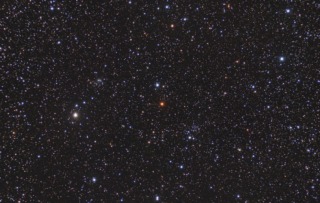
- Constellation: Auriga
- Right Ascension: 05h 09m 05.47
- Declination: +39° 00` 08.5
- Distance: 2,471 ly
- Apparent Magnitude: 8.7 - 9.0
- B-V Color Index: 2.92
TX Aurigae is a carbon star located in the constellation boundries of Auriga. Like many carbon stars, its magnitude varies as it pulsates.
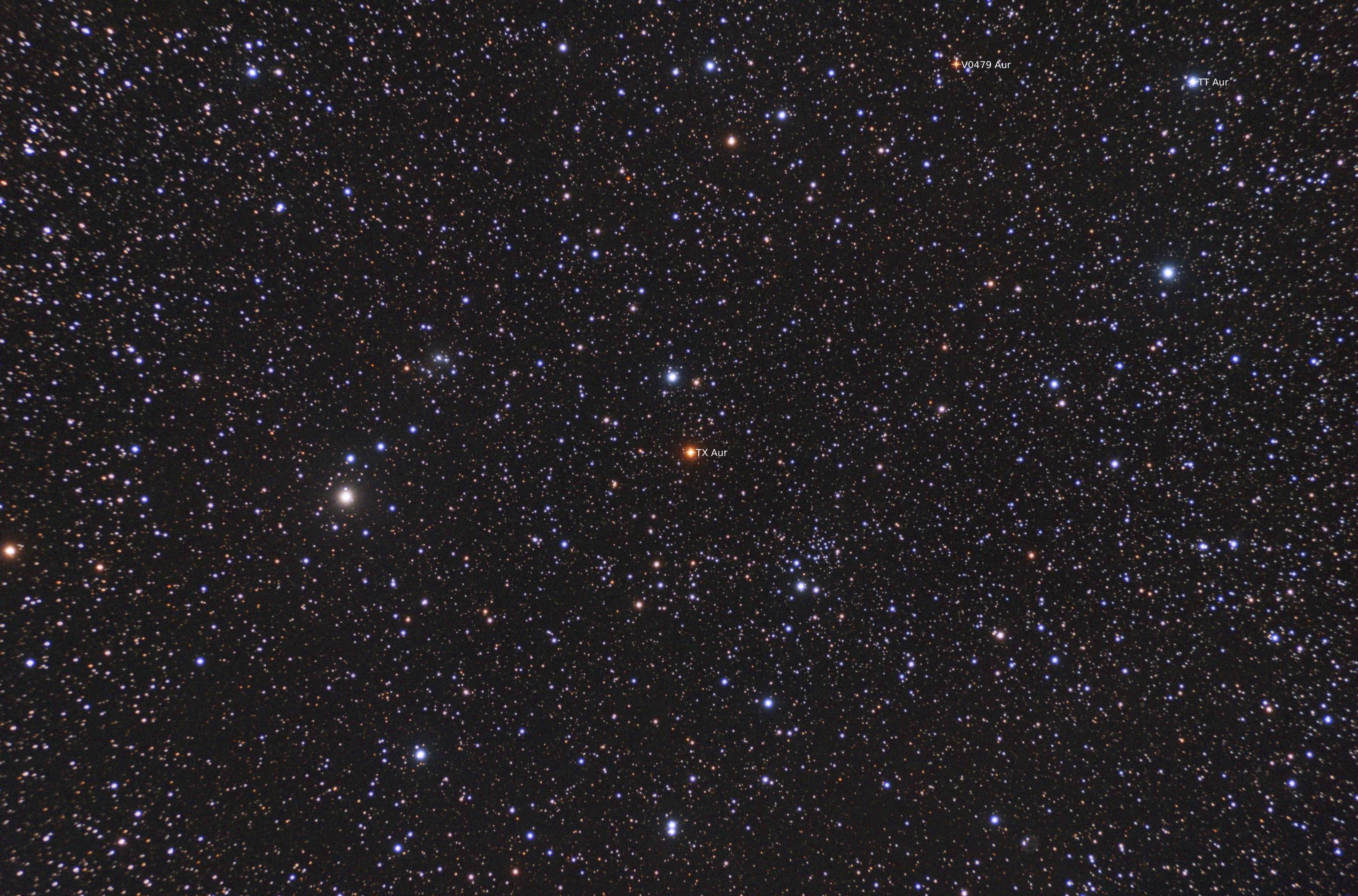
- Details
- Category: Stars
- Telescope: Explore Scientific 127 Refractor
- Camera: ZWO 2600 MM
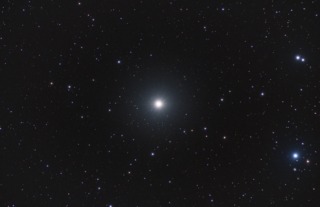
- Constellation: Eridanus
- Right Ascension: 03h 32m 55.84496s
- Declination: −09° 27′ 29.7312″
- Distance: 10.5 ly
- Apparent Magnitude: 3.73 V
- B-V Color Index: +0.887
Epsilon Eridani is a main sequence star of type K2. At around 10.5 light years away, its one of the closer sun like stars to us. It has an estimated age of one billion years making it relative young. It is suspected of having a giant planet orbiting it, along with a circumstellar debris disk implying outer planets.
- Details
- Category: Stars
- Telescope: Explore Scientific 127 Refractor
- Camera: ZWO 2600 MM